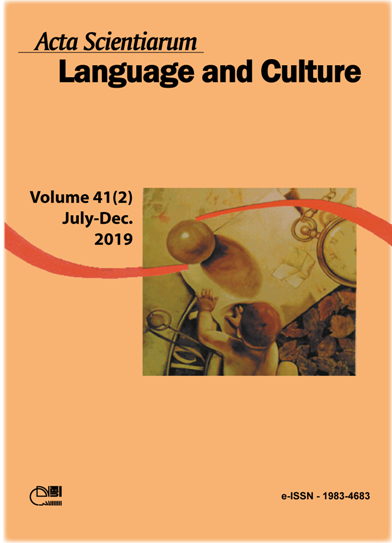Discurso de meritocracia: uma análise da regularidade enunciativa em enunciados institucionais e na série 3%
Resumo
3% (Netflix Brasil, 2016) é uma série de televisão que apresenta um universo dividido em dois lados: o ‘lado de cá’ (Continente), que é miserável e o ‘lado de lá’ (Maralto), descrito como ideal e abundante. Na trama, os jovens de vinte anos, moradores do Continente, são convocados pelo Processo, encarregado de aplicar provas para selecionar 3% deles para Maralto. O Processo, que tem como slogan ‘Você é o criador do seu próprio mérito’, representa o único meio legal de adentrar o outro lado. Saindo do âmbito da série, o Exame Nacional do Ensino Médio (ENEM), elaborado pelo Ministério da Educação, funciona como porta de entrada às universidades, sendo divulgado como a forma de ‘alcançar os sonhos’ e, sobretudo, como uma questão de mérito, conforme o próprio MEC enuncia: ‘quem se preparar (para o ENEM) vai se dar bem’. Dito isso, esta pesquisa tem por objetivo, à luz dos estudos em Análise do Discurso de orientação foucaultiana, analisar a constituição da regularidade enunciativa entre o discurso de meritocracia em enunciados institucionais do MEC e enunciados da série a partir do Processo e do ENEM, os quais são tomados como acontecimentos discursivos e serão descritos e interpretados com base na arquegenealogia foucaultiana no que tange aos conceitos de discurso, acontecimento, governamentalidade e biopoder. A metodologia parte do levantamento bibliográfico seguido do recorte de enunciados para a elaboração de séries enunciativas, úteis à compreensão do objeto e do discurso de meritocracia. A análise permite a conclusão de que existem semelhanças entre o Processo e o ENEM, tornando os enunciados de ambos dialogáveis. Em outras palavras, o discurso de meritocracia em 3% pode ser encontrado nos enunciados do MEC.
Downloads
DECLARAÇÃO DE ORIGINALIDADE E DIREITOS AUTORAIS
Declaro que o presente artigo é original, não tendo sido submetido à publicação em qualquer outro periódico nacional ou internacional, quer seja em parte ou em sua totalidade.
Os direitos autorais pertencem exclusivamente aos autores. Os direitos de licenciamento utilizados pelo periódico é a licença Creative Commons Attribution 4.0 (CC BY 4.0): são permitidos o acompartilhamento (cópia e distribuição do material em qualqer meio ou formato) e adaptação (remix, transformação e criação de material a partir do conteúdo assim licenciado para quaisquer fins, inclusive comerciais.
Recomenda-se a leitura desse link para maiores informações sobre o tema: fornecimento de créditos e referências de forma correta, entre outros detalhes cruciais para uso adequado do material licenciado.




















6.png)









